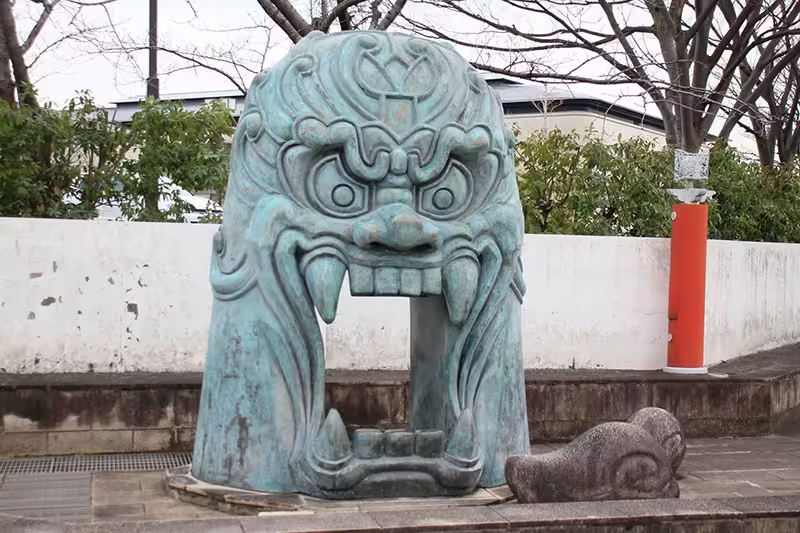日本の歴史において、645年に起こった「大化の改新」は非常に重要な出来事です。この改革は、中央集権国家の基盤を築き、日本の政治体制を根本から変えました。この記事では、大化の改新の背景、重要な出来事、その影響について詳しく解説し、関連する聖地を紹介します。
Introduction The Taika Reform of 645 is a crucial event in Japanese history. This reform established the foundation for a centralized state and fundamentally changed Japan’s political system. In this article, we will explore the background of the Taika Reform, its key events, and its impact, as well as the significant sites associated with it.
大化の改新の背景
蘇我氏の台頭と専横
6世紀から7世紀にかけて、蘇我氏は日本の政治を支配していました。彼らは天皇家との婚姻関係を通じて権力を拡大し、蘇我馬子、蘇我蝦夷、そして蘇我入鹿の時代には、その権勢は絶頂に達しました。しかし、蘇我氏の専横な政治は他の豪族や宮廷内部での反発を招いていました。
- 蘇我氏の支配
- 蘇我氏は、飛鳥地方を中心に強力な権力を持ち、朝廷の実権を掌握していました。
The Rise and Tyranny of the Soga Clan From the 6th to the 7th century, the Soga clan dominated Japanese politics. They expanded their power through marriage ties with the imperial family. During the reigns of Soga no Umako, Soga no Emishi, and Soga no Iruka, their power peaked. However, their autocratic rule caused resentment among other nobles and within the imperial court.
- Soga Clan’s Dominance
- The Soga clan wielded significant power centered in the Asuka region, controlling the imperial court’s affairs.
国際情勢と改革の必要性
同じ時期、中国の唐が中央集権的な体制を強化し、周辺諸国に大きな影響を及ぼしていました。日本もこの動向を受け、蘇我氏の独裁的な支配を終わらせ、天皇を中心とした新たな政治体制を築こうと考えられるようになりました。
- 唐の影響
- 唐の中央集権体制は、日本の政治改革に大きな影響を与えました。
International Context and the Need for Reform At the same time, China’s Tang dynasty was strengthening its centralized governance, significantly influencing neighboring countries. Japan, influenced by these changes, saw the need to end the Soga clan’s dictatorship and establish a new political system centered around the emperor.
- Influence of Tang Dynasty
- The Tang dynasty’s centralized system had a profound impact on Japan’s political reform.
大化の改新の主要な出来事

乙巳の変(645年7月10日)
「乙巳の変」は、大化の改新の最初の一歩であり、中大兄皇子(後の天智天皇)と中臣鎌足(後の藤原鎌足)が蘇我入鹿を暗殺し、蘇我氏の権力を終わらせた事件です。このクーデターは、飛鳥の飛鳥板蓋宮で行われました。
Key Events of the Taika Reform Isshi Incident (July 10, 645) The Isshi Incident was the first step in the Taika Reform. Prince Naka-no-Ōe (later Emperor Tenji) and Nakatomi no Kamatari (later Fujiwara no Kamatari) assassinated Soga no Iruka, ending the Soga clan’s power. This coup took place at the Asuka Itabuki Palace in Asuka.
- Asuka Itabuki Palace Ruins
- Address: Asuka, Asuka-mura, Takaichi-gun, Nara Prefecture
- Official Website: Asuka Village Official Site
改新の詔(646年)
翌年、天皇が「改新の詔」を発布し、具体的な改革の方針を示しました。この詔では、公地公民制の導入、地方行政の整備、税制度の改革が掲げられました。
Edict of Reform (646) The following year, the emperor issued the “Edict of Reform,” outlining specific reform policies. This edict introduced the public land and citizen system, reorganized local administration, and reformed the tax system.
公地公民制
すべての土地と人民を天皇のものとし、中央政府が直接管理することとしました。これにより、豪族たちの土地支配が抑えられ、中央集権化が進みました。
Public Land and Citizen System All land and people were declared the emperor’s possessions and directly managed by the central government. This policy curbed the power of local nobles and advanced centralization.
地方行政制度の整備
地方には国司や郡司が設置され、中央からの統治が強化されました。この制度は、日本全国にわたる統一的な行政体制を確立するための重要なステップでした。
Reorganization of Local Administration Local officials known as Kokushi and Gunji were appointed, strengthening central control over the provinces. This was a crucial step in establishing a unified administrative system throughout Japan.
戸籍の整備と税制改革
人口を正確に把握するために戸籍が整備され、税の徴収も効率的に行えるようになりました。これにより、国家の財政基盤が強化されました。
Establishment of Cadastral Records and Tax Reform Cadastral records were organized to accurately manage population data, facilitating efficient tax collection. This reform strengthened the state’s financial base.
大化の改新の地政学的影響
大化の改新は、日本列島全体を一つの統一国家として管理することを可能にしました。これにより、国内の安定が図られ、外敵からの防衛体制も強化されました。また、改革後、日本は中国や朝鮮半島との関係をさらに強化し、文化的・経済的な交流が深まりました。
Geopolitical Impact of the Taika Reform The Taika Reform enabled Japan to manage the entire archipelago as a unified state. This promoted domestic stability and strengthened defenses against external threats. Additionally, post-reform Japan fortified its relations with China and the Korean Peninsula, enhancing cultural and economic exchanges.
大化の改新の聖地巡り
飛鳥寺
飛鳥寺は、日本最古の本格的な仏教寺院であり、大化の改新の舞台となった飛鳥の地に位置しています。ここには蘇我入鹿の首塚もあり、蘇我氏の栄枯盛衰を感じることができます。
- 住所: 奈良県高市郡明日香村飛鳥682
Pilgrimage to the Taika Reform Sites Asuka Temple Asuka Temple is Japan’s oldest authentic Buddhist temple, located in the Asuka area, where the Taika Reform unfolded. The temple also houses the grave of Soga no Iruka, reflecting the rise and fall of the Soga clan.
- Address: 682 Asuka, Asuka-mura, Takaichi-gun, Nara Prefecture
藤原宮跡

藤原宮は、大化の改新後に設立された日本最初の本格的な宮殿です。藤原京の中心に位置し、現在もその壮大な遺構を見ることができます。
- 住所: 奈良県橿原市高殿町
- HP: 藤原宮跡
Fujiwara Palace Ruins Fujiwara Palace, established after the Taika Reform, was Japan’s first major palace. It served as the center of Fujiwara-kyō, and its impressive remains can still be seen today.
- Address: Takadono-cho, Kashihara City, Nara Prefecture
- Website: Fujiwara Palace Ruins
長岡京跡

長岡京は、奈良時代の末期に設立された都で、平安京に移る前の一時的な首都でした。この地もまた、大化の改新の影響を受けた政治的な中心地の一つです。
- 住所: 京都府長岡京市
- HP: 長岡京市埋蔵文化財センター
Nagaoka Capital Ruins Nagaoka Capital was established in the late Nara period as a temporary capital before the relocation to Heian-kyō. This site also reflects the political influence of the Taika Reform.
- Address: Nagaokakyo City, Kyoto Prefecture
- Website: Nagaokakyo City Buried Cultural Properties Center
まとめ
大化の改新は、日本が中央集権国家としての道を歩むきっかけとなった重要な歴史的出来事です。その影響は現代の日本にも及んでおり、当時の改革精神は今なお日本の政治や社会に生き続けています。飛鳥や藤原京といった歴史的な聖地を訪れることで、当時の歴史的な背景や改革の意義を深く理解することができます。
Conclusion The Taika Reform was a pivotal event that set Japan on the path to becoming a centralized state. Its impact resonates in modern Japan, and the reform spirit of the time continues to influence contemporary politics and society. Visiting historical sites like Asuka and Fujiwara-kyō provides a deeper understanding of the historical context and significance of these reforms.
質問と回答
- 大化の改新が始まった年はいつですか?
- 645年です。
- 大化の改新の中心となった人物は誰ですか?
- 中大兄皇子と中臣鎌足です。
- 大化の改新で導入された主な制度は何ですか?
- 公地公民制です。
Questions and Answers
- When did the Taika Reform begin?
- It began in 645.
- Who were the central figures in the Taika Reform?
- Prince Naka-no-Ōe and Nakatomi no Kamatari were the key figures.
- What was the main system introduced by the Taika Reform?
- The Public Land and Citizen System was introduced.


